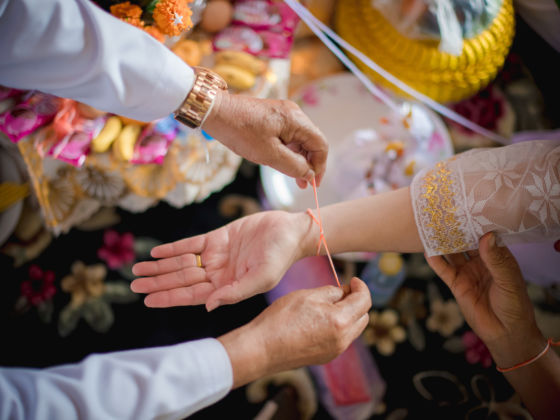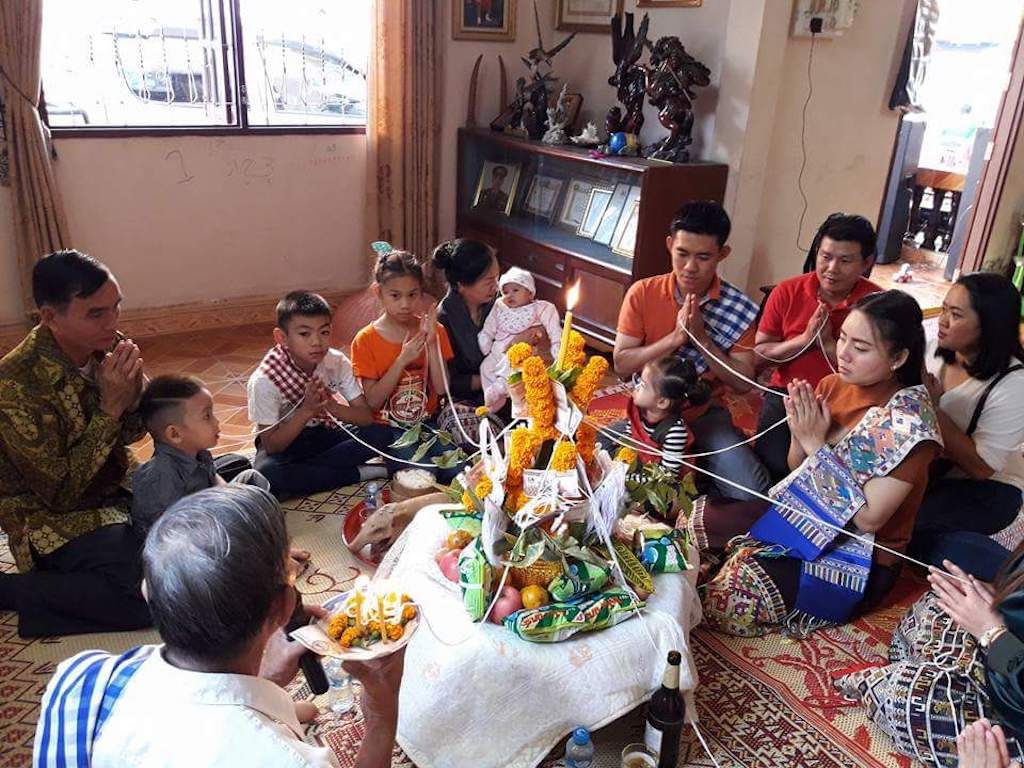An old man sits cross-legged on the living room floor adjusting his ankle-length robe. In front of him is a two-foot-tall, Christmas tree-shaped tower made of woven palm leaves and decorated with bright orange marigolds. Several people pile the last of their offerings — boiled eggs, sticky rice, and other food — around its base.
Lengths of white cotton string tied to the top of the tower span out in every direction into the crowded room. Aunts, uncles, sisters, brothers, cousins, friends, and neighbors sit on the floor around the centerpiece, the women tucking their legs underneath their sinhs (traditional Lao skirts). Everyone is given a length of string to hold between their palms. In the silence, the old man begins to chant, calling on the spirits, or khuans.
In Laos, luck — along with health, wealth, and happiness — comes from the spirits. A baci, or good luck ceremony, calls them with chanting, while cotton string ties them and the good luck they bring in place.
After all, once you’ve gone to the trouble of getting luck to come to you, you wouldn’t want it to get away.



